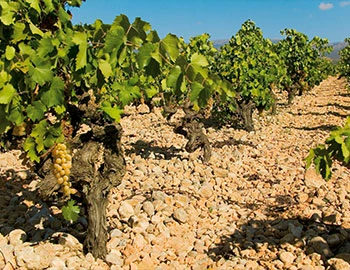Ribas negre 2020
VdT, Ribas, 750 ml

| Grape variety: | Mantonegro, Syrah, Callet, Merlot |
| Producer: | Bodegas Ribas |
| Origin: | Spain / Mallorca |
| Other vintages: |
Description
A true Mediterranean temperament: warm, sunny, inviting. The first drop from Bodega Ribas really lets the open-hearted fruit of the Mantonegro variety shine. An exuberant bouquet of sweet raspberry and crunchy cherry, accompanied by Mediterranean herbs and subtle roasted notes. Outrageously juicy and silky on the palate with a wonderful fruity sweetness - it flows! Only gently kissed by the wood. It's a perfect all-rounder for barbecues, loves olives and wraps up braised meat, lentils and beans with favour. Tip: chill slightly in summer.
Attributes
| Origin: | Spain / Mallorca |
| Grape variety: | Mantonegro, Syrah, Callet, Merlot |
| Label: | Vegan, Certified organic or biodynamic wine |
| Ripening potential: | 2 to 6 years |
| Drinking temperature: | 16 to 18 °C |
| Food Pairing: | Rabbit ragout with olives, Moroccan specialities, Spiced grillades |
| Vinification: | fully destemmed, fermentation in steel tank, long must fermentation |
| Harvest: | hand-picking, strict selection, selecting the grapes (by hand) |
| Maturation: | in used barriques |
| Maturation duration: | 12 months |
| Volume: | 14.5 % |
| Note: | Contains sulphites |
Bodegas Ribas
We could talk about our winery of the year, Bodega Ribas on Mallorca, all day long. But it's best to see and read for yourself! We sent wine journalist Britta Wiegelmann and cameraman Felix Groteloh to experience the winery and the family at first hand. Araceli and Javier Servera Ribas, the brother and sister team behind the wines, tell us how the oldest existing winery on the island survived phylloxera, why they love their local grape, the Mantonegro, so much and what the sea has to do with it all.
For 300 years, the Ribas winery in Consell, a village of 4000 people just a stone's throw from Palma, has been cultivating a real treasure: ancient indigenous grape varieties such as Mantonegro, Gargollassa, Callet, Prensal blanc and the rare Giró Ros. These grapes can only be found here – and who could offer them a better home than the oldest bodega still in existence on the island? Pedro Ribas planted the first vines in 1711, and today the vineyards cover 40 hectares at around 150 metres above sea level with sandy and calcareous, sometimes very stony soils that are cultivated organically.
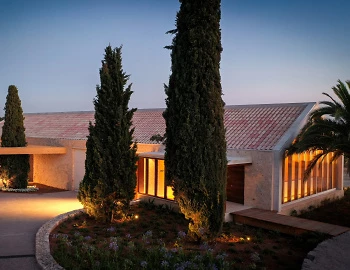
Syrah
A hint of pepper
The legend stubbornly persists that the Syrah variety came from the Persian city of Shiraz. Yet, researchers have shown that it is a natural crossing of two old French varieties: the red Dureza from the Rhône Valley and the white Mondeuse blanche from Savoy. Wines from Syrah are gentle and concentrated. They smell of dark berries, violets and liquorice, and amaze with a piquant touch of white pepper. As varietal wines, they are found on the northern Rhone, as in the Hermitage or Côte Rôtie appellations, as well as in Swiss Valais. In the southern Rhône Valley, Syrah is often wedded with Grenache and Mourvèdre. In 1832, a Frenchman brought the variety to Australia, where it became the emblem of the national wine industry. There, the weightiest versions develop with typical notes of tar and chocolate.
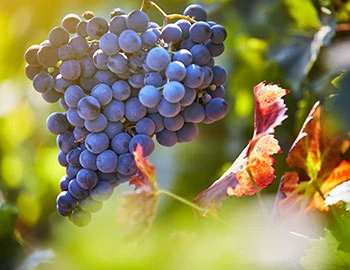
Mantonegro
The prince of Mallorca
The word “negro” – black – in this variety’s name is misleading. It refers to a red wine grape, and a relatively light one at that. Some grapes even shimmer more pink than red. The Manto negro is the most important variety, and a real native, of the holiday island of Mallorca. It yields bright-red, soft wines with plenty of alcohol and an unusual bouquet of blackberry, fig and pomegranate. A small amount of Callet – a slightly stronger Mallorcan variety – is usually added to lend it structure. Wines from Manto negro are well suited for barrel maturation, especially if they come from old vines. These provide particularly concentrated musts that are full of character.
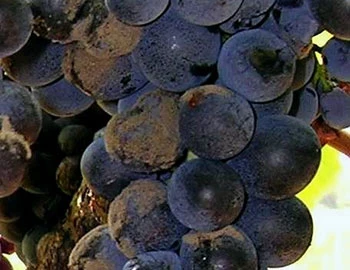
Merlot
Everybody’s darling
Merlot is the most charming member of the Bordeaux family. It shines with rich colour, fragrant fullness, velvety tannins and sweet, plummy fruit. It even makes itself easy for the vintner, as it matures without issue in cool years as well. This is in contrast to the stricter Cabernet Sauvignon, which it complements as a blending partner. Its good qualities have made the Merlot famous worldwide. At over 100,000 hectares, it is the most-planted grape in France. It also covers large areas in California, Italy, Australia and recently in Eastern Europe. The only catch is that pure Merlot varieties rarely turn out well. Its charm is often associated with a lack of substance. Only the best specimens improve with maturity. They then develop complex notes of leather and truffles. This succeeds in the top wines from the Bordeaux appellation of Pomerol and those from Ticino, among others.
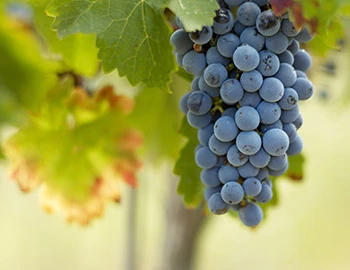
Mallorca
Mallorca: new premium wines from old varieties
The party island is showing an entirely different, more delightful side: every year, more premium wines are produced in Mallorca. While international varieties like Chardonnay, Cabernet Sauvignon and Merlot yield excellent wines in Mallorca’s terroir, top winemakers increasingly use the best native varieties, such as Manto Negro, Callet and Prensal Blanc. The results are independent wines with Mediterranean charm and surprising freshness.
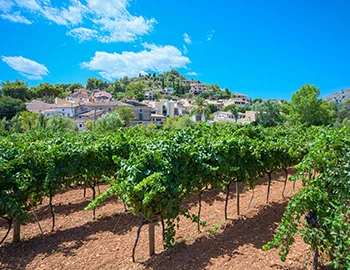
Spain
Spain – Variety and perfection
“Somewhere in la Mancha, in a place whose name I do not care to remember...,” begins Don Quixote's odyssey.
The most famous part is definitely when Don Quixote thinks windmills are his enemy and wants to fight them – until they nearly kill him. It’s possible there was a bit too much of the La Mancha wine at play. Spanish vines fight for their survival in rugged landscapes, battling fierce drought and rough soils. But they fight well.
